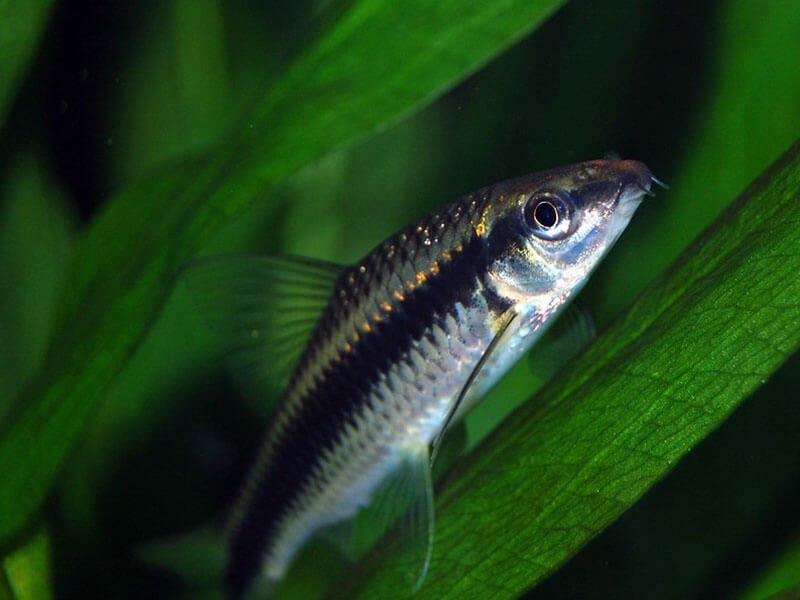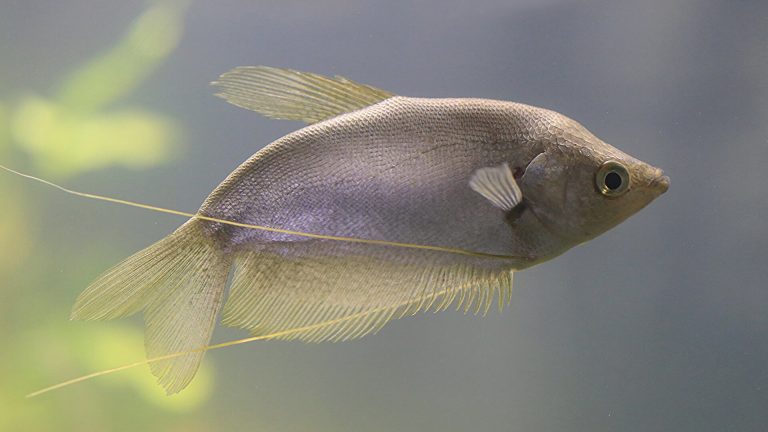Maintaining a healthy balance in your aquarium ecosystem is crucial for any aquarium enthusiast, especially when it comes to dealing with algae growth. Fortunately, introducing an algae eater is a simple solution to this common challenge in freshwater aquariums. These specially bred aquatic creatures can keep your tank free from excess algae and create a healthy environment for your fish. Keep reading to learn more about these helpful creatures and how they can keep your aquarium sparkling clean.
Algae eaters can be a lifesaver for your freshwater tank by consuming a wide range of algae, including stubborn, stringy types that can quickly take over your tank if left unchecked. They come in different varieties, ranging from small, snail-like creatures to larger fish that can grow up to a foot long. These creatures not only help to keep your tank clean but are also fascinating to watch as they go about their work.
So, if you're struggling with excess algae in your aquarium, consider introducing an algae eater to help maintain a healthy environment for your fish.

What to Know Before Choosing Algae Eater For Your Aquarium?
Fish species and invertebrates like snails or shrimp that feed on algae are known as algae eaters. While some algae eaters consume specific types of algae, others eat a variety of algae types. Algae is the natural diet for these creatures, either solely or partly.
Luckily, most commercially available algae eaters thrive in a variety of water conditions, and as long as water quality is maintained, the only thing to consider is ensuring that the different personalities of fish coexist well together.
Choosing The Right Algae Eater
When selecting an algae eater for your tank, it's important to consider several factors. First, think about the specific type of algae in your tank and choose a species known to eat that type. It's also important to ensure the algae eater is compatible with the other fish in the tank and won't become aggressive over territory. Tank size is another consideration; a large tank may require multiple algae eaters to effectively control algae growth.
In addition to these factors, there are other things to consider before bringing an algae eater into your tank. You should ensure that oxygen levels in the tank are suitable for the algae eater and that the tank mates will be able to coexist peacefully. Some algae eaters prefer a lot of water current while others do not, so it's important to choose an algae eater that is compatible with the current rate in your tank. Finally, the density of foliage and hardscape should be appropriate for the species of algae eater you choose. If you have multiple types of algae in your tank, you may need to introduce several different types of algae eaters to effectively control the problem.
Adding Algae Eaters to Your Aquarium
To set up your aquarium for an algae eater, follow these steps:
First, purchase an appropriate algae eater for your tank. When you bring it home, allow it to sit in its bag in the tank for 15 minutes to adjust to the water temperature. Then, use a net to transfer the algae eater into the tank. Remember to only add three algae eaters at a time and avoid adding stale water to the tank. Your filter should be able to handle the changes, but monitor the tank's pH, nitrite, ammonia, and nitrate levels regularly. Some pet stores offer free water testing. Set up the aquarium one day before adding any fish.
The size of your tank will depend on the number and size of your fish. A 6-inch fish will require a 20-gallon tank, while the largest algae eaters will require a 75-gallon tank. Place the tank near a power source in a low-traffic area away from direct sunlight and drafts. The base of the tank should be stable since water weighs 8 pounds per gallon.
To set up the tank, add a 3-inch layer of washed gravel to the bottom. Fill the tank halfway with de-chlorinated water and add a thermometer and any other necessary equipment. Decorate the tank with plants, rocks, furniture, or other items. Finally, fill the remaining tank with de-chlorinated water.

To maintain the cleanliness and health of your aquarium, it is important to have proper filtration. The water should be filtered 3-5 times per hour, and you should carefully read and follow the instructions provided in the manual. Choose the appropriate filter setup for your tank.
Before introducing the algae eater, check the required water temperature and select a heater that provides 5 watts of power for each gallon of water in the tank. If you have a large tank, you may need heaters at both ends. Wait for 15 minutes before turning on the heater to allow the algae eater to acclimate to the water.
Make sure the filter and hood light are on 24 hours a day. Monitor the water temperature and adjust the heater as necessary.
What to do After Adding Algae Eaters to Your Aquarium?
Maintain a regular cleaning schedule for your aquarium. Check the filter and temperature daily, and inspect all other features of the tank. Conduct a water check once a week and evaluate the water quality every 2-4 weeks. If necessary, change 10-25% of the water. Introduce new fish gradually to the tank, and limit the number of algae eaters as they grow larger.
What Are The Other Ways to Keep Aquarium Clean of Algae?
There are various methods to manage algae growth in a fish tank, one of which is by introducing algae-eating fish. However, the tank should be large enough to accommodate additional fish of different species for effective algae control. Other methods include:
- Installing a high-quality filter that can efficiently remove algae from the water. Regular cleaning of the filter is necessary for optimal performance.
- Setting up a feeding schedule and amount for the fish to prevent uneaten food from accumulating in the tank.
- Adding live plants to the tank to create competition for waste food and nutrients among the plants and algae.
- Maintaining proper hygiene by regularly changing water, wiping the glass, and vacuuming the gravel to minimize algae growth.
- Turning off the tank lights for several hours at night to prevent photosynthesis and reduce algae growth.
The most effective way to control algae growth is to keep nitrate levels in check and ensure proper lighting in the tank. Regular water changes also help to control algae growth. It is important to keep the tank away from sunlight, and the lights in the tank should be on for only around six hours per day.
Excessive algae growth can be harmful to fish that do not eat it. Some people may question whether two different species of algae-eating fish can live together in the same tank. While algae eaters can coexist with other freshwater fish, they can become territorial around other algae eaters of the same species when they mature. The term "algae eater" or "algivore" is used for several species of bottom-dwelling or algae-eating fish.
What People Are Reading:
Frequently Asked Questions About Algae Eater
We have answered some of the general queries here.
Do I need to feed my algae eater?
Some species of algae eaters need more care than others mostly for supplemental feeding. In case your tank is making enough algae you can rest in peace. If not some type of vegetables and supplements need to be added to the tank.
What to feed to my algae eater?
Algae eaters are particular creatures that grow on the food of algae. All fish will not eat all varieties of algae. You should know the variety of algae to be feed to different species. The algae eaters are snails, shrimp, clams, and specific fish like catfish and plecos. Alter the tank conditions for the suitability of the algae eater.
In case the tank is producing a large number of algae then no supplements need to be added. If the algae are not enough then some variety of vegetables or algae wafers spirulina pellets, algae discs, and pellets need to be added to the tank. Algae eating fish are herbivorous and prefer to eat plant foods. Give them sometimes fresh vegetables such as zucchini, cucumbers, or kale. Raw vegetables should be placed close to the bottom of the aquarium.
Algae eaters' movement is along the sides as well as the bottom of the aquarium. They scrape algae through their sucker mouths. Most of the algae-eating fish prefer to eat soft hair algae and a small section goes for strand algae.
What do algae eaters eat when there are no algae?
Once the aquarium is free from algae the fish requires to be fed with a lot of extra food to supplement the diet such as blanched vegetables.
Do algae eaters clean fish tanks?
Algae eaters eat a lot of algae. Algae grow rapidly and algae eaters consume a lot of it. Place a high-quality filter to remove an excess of algae from the water.
Do algae eaters really help?
Not all types of algae eaters eat all varieties of algae. Pick the best type of algae eater for your tank. Algae eater consumes the algae and control flatworm population. They eat the remaining detritus of the tank. A planted tank is good for them; they do not damage plants while eating algae.











